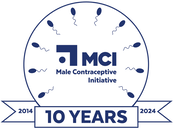Withdrawal
This method involves a man removing his penis from the vagina before ejaculating to prevent sperm from reaching, and potentially fertilizing, an egg.
Synopsis
Also known as coitus interruptus and “pulling out”, this birth control method involves the man withdrawing his penis from his partner’s vagina and ejaculating outside of the vagina in order to keep his semen away from her external genitalia. This method works by keeping sperm out of the woman’s body.
Also known as coitus interruptus and “pulling out”, this birth control method involves the man withdrawing his penis from his partner’s vagina and ejaculating outside of the vagina in order to keep his semen away from her external genitalia. This method works by keeping sperm out of the woman’s body.
Key Points
- One of the least effective contraceptive methods. Some men use this method effectively, however. Offers better pregnancy protection than no method at all.
- Always available in every situation. Can be used as a primary method or as a backup method.
- Requires no supplies and no clinic or pharmacy visit.
- Promotes male involvement and couple communication.
Effectiveness
Risk of pregnancy is greatest when the man does not withdraw his penis from the vagina before he ejaculates with every act of sex. One of the least effective methods, as commonly used: it leads to about 20 pregnancies per 100 women (20%) for partners who use the withdrawal method over the first year. This means that 80 of every 100 women (80%) whose partners use withdrawal will not become pregnant. When used correctly with every act of sex, about 4 pregnancies per 100 women (4%) whose partners use withdrawal over the first year. This method offers no protection against sexually transmitted infections.
Risk of pregnancy is greatest when the man does not withdraw his penis from the vagina before he ejaculates with every act of sex. One of the least effective methods, as commonly used: it leads to about 20 pregnancies per 100 women (20%) for partners who use the withdrawal method over the first year. This means that 80 of every 100 women (80%) whose partners use withdrawal will not become pregnant. When used correctly with every act of sex, about 4 pregnancies per 100 women (4%) whose partners use withdrawal over the first year. This method offers no protection against sexually transmitted infections.
Interested in a contraception consultation with a healthcare provider?
Visitors who would like to learn more about this contraceptive method are invited to click on the button below to begin the process of seeking a contraception consultation with a healthcare professional.
Interested in a Vasectomy?
Visitors that have already decided they would like to proceed with a vasectomy consultation are invited to go directly to that section of the decision-making tool by clicking on the button below and following the instructions provided on those pages.

